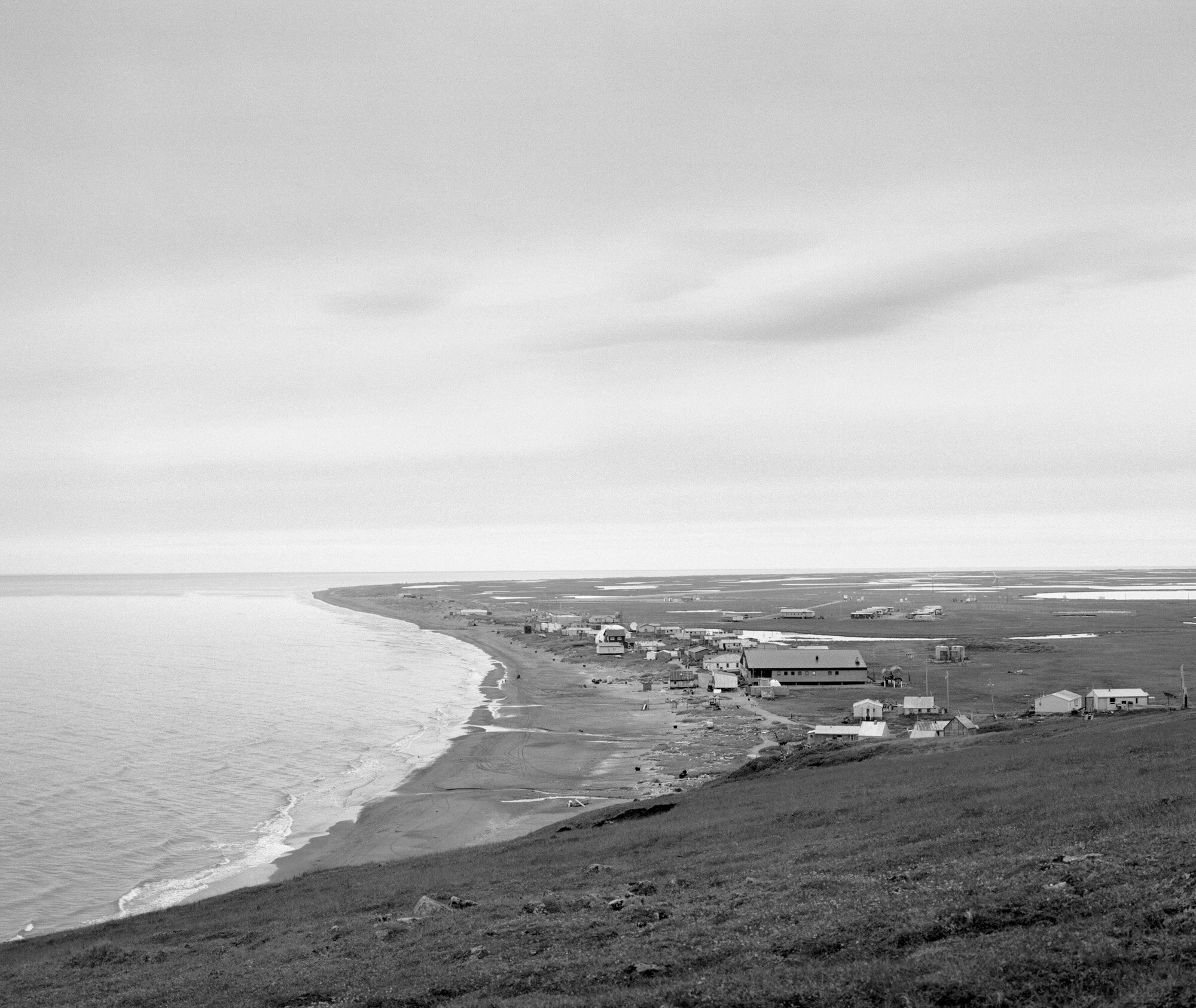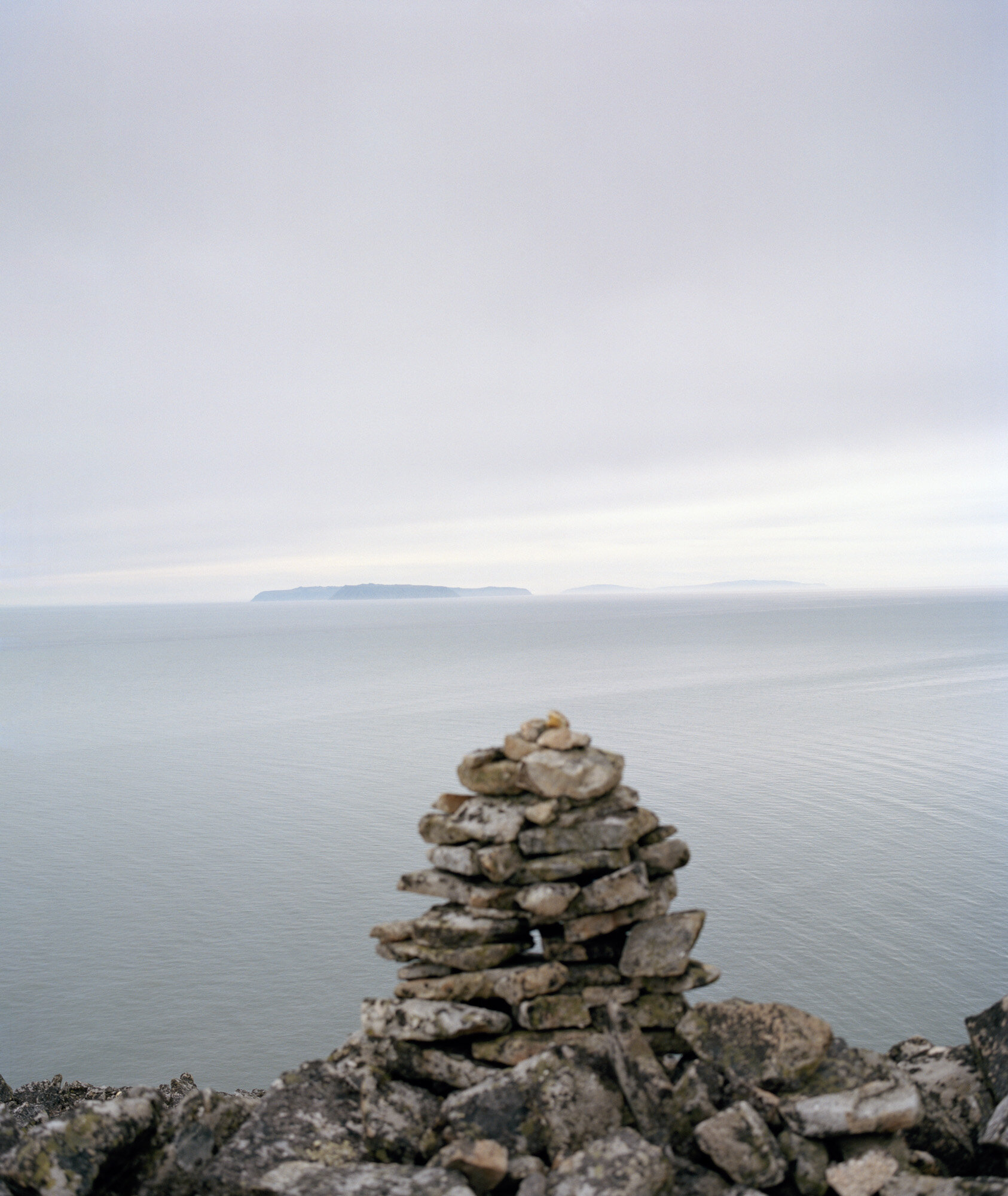VI THE EDGE OF TOMORROW
INUPIAT - Wales and Little Diomede, 2015
The native village of Wales lies at the westernmost tip of the Alaskan mainland, on the coast of the Bering Sea. 15 Miles to the west, in the middle of the Beringstrait, lie the two remote islands Little and Big Diomede. Big Diomede belongs to Russia and Little Diomede is part of the United States. While they are only 3 miles apart, the international date line seperates them by one day. Pressed against the steep edges of the rocky island, on the west side of Little Diomede, lies a small village. Some 80 people, mainly native Inupiaq are living there. When they look out of their windows, to the west, they are not only looking at Russia, they are also literally looking at tomorrow. A couple of times a month a helicopter service flies from the mainland, bringing supplies, visitors and family to and from the island. Sometimes the helicopter is grounded for several weeks due to bad weather or maintenance.
The people in Wales and on Little Diomede hunt for sea mammals, mainly walrus and bearded seal but also bowhead whale and polar bear. In spring thousands of bowhead wales migrate to the north, through the Beringstrait, searching for food in the Beaufort and Chukchi sea. In fall they migrate the opposite way making the Bering Strait the most important arctic corridor for sea mammals. Because of climate change the seasons are changing rapidly. Making it more difficult to hunt. The weather, sea and ice conditions in the narrow Beringstrait are very rough and are becoming more and more unpredictable.
Winter is almost coming and the people in the two villages, Wales and Little Diomede, are waiting for the hunting season to start.






















